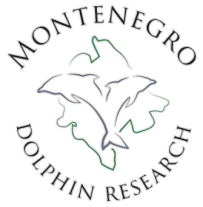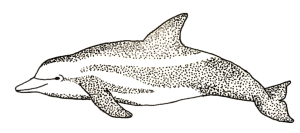In this series research assistant S. Capitain introduces the topic of wildlife conservation and outlines the steps neccessary for conservation efforts to move from observation to action. Read the first installments of the series here – The Basics of Conservation and Research. With research providing suitable knowledge about the situation at hand, the planning process can take over the lead. As mentioned in our last article, first decisions already need to be made before the main research even begins in order to assure efficient demand-led data acquisition. Such early decisions include – but are not limited to – the definition of a target species, the delineation of a research area and the establishment of an available budget. In the case of DMAD’s Montenegro Dolphin Research project, 4 species of cetacean are the target animals, surveyed in Montenegrin and partly Albanian seas, with a focus on basic environmental factors and marine traffic. Further required decisions depend on the selected conservation approach, which mainly differ in focus depending on the specific situation in which they occur. Conservation designs can be ecosystem-focused, mostly focusing on preserving and improving health and integrity of the relations within the sea. Species protection-based conservation focuses on the target animal and its direct environment, guaranteeing the functionality of the factors it depends on and stands in direct relationship with. Essentially based on human welfare, the sustainable livelihood approach works towards a marine environment that can support the people depending on it in daily life and economy, for example through the improvement of fishing grounds. Either way, basic presuppositions include the exact definition of the protected areas and habitats, permitted activities and rights, enforcement strategies and time frame. Several studies have shown that the most important part of the planning process is the involvement of all stakeholders, meaning all affected and interested groups in and around the defined area. That includes the scientists providing the data, the responsible governmental institutions and – most importantly – the general public such as fishermen, residents and businesses. With a lot of contrasting positions in the room, thorough conflict mitigation is essential. Extensive assessment and identification of stakeholders, their expectations and the distribution of costs and benefits need to be conducted to provide a plan that all parties can agree with and commit to for the long term. By including the later management instance in the planning process, the likelihood of a realistic and broadly consented plan increases sharply. One way to balance involved stakeholder expectations is through the spatial planning method. Herein the “spatial and temporal distribution of human activities in marine areas [is allocated] to achieve ecological, economic and social objectives, […] usually specified through a political process”. Zones with different activity permissions and goals are tailored to their importance in each regard and the specific threats in each area. Namely managed as Marine Protected Areas (MPA), they are often part of a bigger conservation area. The integrated management allows for a “comprehensive way of planning and managing human activities so that they do not conflict with each other and so all factors are considered for the conservation and sustainable use” . A prime example of this design approach has been operated in the world’s largest coral reef, the Great Barrier Reef in Queensland, Australia. The planning process itself included at least two statutory phases of public participation – one before, one after the main zoning draft was discussed and decided on. To offer suitable preparation and guidance, multiple brochures with information material were provided. “Elected representatives, the media and indigenous communities were all targeted with information specifically written and formatted for their needs. A mix of technical, scientific and layman’s information were made widely available”. By including additional zoning provision, special management measures in certain area were put into place, such as the permission of traditional use of marine resources to practice the aborigines living marine culture. To mitigate overlapping Federal and State jurisdiction, an independent Australian Government agency was put in place for the protection and management of the Marine Park. Their success is widely believed to result from the unexpected amount of public involvement. To name just one example of their achievement, recent studies suggest that several of the protected individual reefs are more resilient towards climate change than expected. They are better able to regenerate themselves, thereby acting as sinks estimated to be “able to supply larvae to almost half of the entire ecosystem in a single year”. DMAD’s main task in its planning process was the supply of essential data (e.g. through our website and affiliate stranding network, sancet.org), the consultation of decision-makers and participation in meetings. At the end of September 2019, we conducted several boat surveys in Güzelcamli, Turkey, to get a better understanding of the current cetacean population while the planning process of an MPA takes place. The observation of several striped dolphin groups with calves suggested that the area could be a nursing ground, making its protection even more important. We regularly talk to fishermen in the harbour and on our boat surveys to gain their point of view and understand their expectations and desires. Additionally, as a local group in Montenegro, we try to come up with possible MPA plans for the government to use and implement. In our next article, we will cover how a smooth transition from planning to implementation can be ensured. We will take a look at how Ireland mobilized its public, how a Mexican family managed to mobilize a whole town and how DMAD takes the public along on their quest to conserve the Montenegrin waters. References:Day, J.C. (2002). Zoning—lessons from the Great Barrier Reef Marine Park. Ocean & Coastal Management. 45(2): p. 139-156Bodkin, H. (2017). Hope for Great Barrier Reef with discovery of hardcore 100 able to withstand climate change. Online access: https://www.telegraph.co.uk/science/2017/11/28/hope-great-barrier-reef-discovery-hardcore-100-able-withstand/ Last accessed: 28.09.2019

